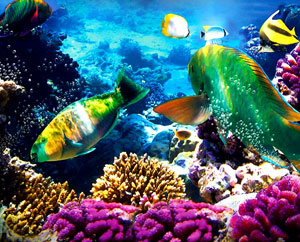You probably have heard that Australia’s government okayed the significant expansion of the country’s seaport of Abbot Point, which will be turned into one of the world’s biggest coal ports. This expansion will result in the removal of more than one hundred million cubic feet of sludge from the seabed that will be dumped into the ocean near the World Heritage location of Australia’s Great Barrier Reef. Just to give you an idea: this is so much waste that if all this dredged material would be dumped on land, the pile of mud would be higher than Egypt’s Pyramid of Giza. The dump of waste in Australia’s waters is going to endanger Australia’s finest tourist attraction. The Great Barrier Reef brings in almost six billion dollars every year, and dumping such a huge load of mud into this spectacular national marine region is a shame and endangers the World Heritage listing of this unique place.
Alternatively, we can find significantly better solutions to remove the sludge. These days we can find innovative dewatering techniques such as the geotube-container-method developed by Dutch corporation Royal TenCate that may very well take care of the waste. The company designed a cutting-edge geotube system that works by using tubular-shaped containers manufactured from permeable geotextiles, and these containers are throughout the world used as the best dewatering solution for waste materials from ports, lagoons, canals and other waterways.
The company developed a technique that is relatively simple: waste material is put into containers made from Geotube textiles. Then ecologically safe polymers are added to the sludge, so the non-liquid materials will bind together, the water is separated and can seep through the geotubes. This way, the solid waste is safely stored in the containers. The geotubes can easily be removed and transported for removal or for additional treatment.
This revolutionary geotube technology is pretty new and not really widely recognized, although it has been applied at more than two thousand locations around the world. It actually is a little weird that not a single soul mentioned this ingenious solution as the ideal alternative to dumping the waste in the fragile ecosystem of the Great Barrier Reef. Let’s not accept this dumping of waste in this beautiful area, so spread the word about this ecologically secure alternative. We might be able to save Australia’s Great Barrier Reef, so share this wonderful infographic to tell the world about this far better alternative.

